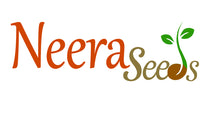There’s something heartwarming about tending to a garden — the soft rustle of leaves in the morning breeze, the fragrance of herbs on your fingertips, and the colorful blooms dancing under sunlight. Gardening isn’t just about growing plants; it’s about growing happiness, balance, and life. Every seed you sow becomes part of a quiet rhythm — a connection between you and nature.
Here are 5 companion flowers that every gardener should grow to boost vegetable and herb growth, attract pollinators, and keep pests away — naturally and beautifully.
1. Marigolds – The Guardian Flower of Every Garden
Marigolds are the superheroes of organic gardening. Their bright golden blooms don’t just add cheer — they repel nematodes, aphids, and whiteflies, protecting your tomatoes, peppers, and basil.
Best season to grow:
-
Spring to early summer is ideal for sowing marigold seeds.
-
They love full sunlight and warm soil (around 20–25°C).
Pro tip: Scatter marigolds around vegetable beds or along borders to create a vibrant pest barrier.
2. Sunflowers – Nature’s Pollinator Magnet
Sunflowers aren’t just stunning — they attract bees, butterflies, and ladybugs, which help pollinate nearby crops like cucumbers, beans, and herbs. Their tall stalks can even act as natural supports for climbing plants.
Best season to grow:
-
Sow in spring or early summer when frost has passed.
-
They prefer well-drained soil and full sun exposure.
Pro tip: Plant sunflowers on the north side of your garden to prevent shading smaller plants.
3. Nasturtiums – The Natural Pest Repellent
Nasturtiums are a gardener’s secret weapon. These colorful, edible flowers act as a trap crop, luring aphids and other pests away from your precious vegetables like broccoli, kale, and lettuce.
Best season to grow:
-
Sow nasturtium seeds in early spring after the last frost.
-
They thrive in moderate sunlight and well-drained soil.
Pro tip: Their leaves and flowers are edible — add them to salads for a peppery twist!
4. Lavender – The Fragrant Protector
Lavender isn’t just calming to humans — it’s a deterrent to moths, mosquitoes, and fleas. Its soothing scent also attracts bees that improve the yield of herbs like rosemary, sage, and thyme.
Best season to grow:
-
Plant in late spring or early summer.
-
Prefers sunny spots and slightly dry, well-drained soil.
Pro tip: Use lavender borders to add fragrance and a peaceful charm to your herb beds.
5. Calendula – The Healing Bloom
Known as the “pot marigold,” calendula is a must-have companion for tomatoes, carrots, and spinach. It attracts beneficial insects like hoverflies and repels aphids and beetles naturally.
Best season to grow:
-
Sow in spring or early autumn.
-
Tolerates partial shade but blooms best under full sunlight.
Pro tip: Calendula petals are edible and often used in herbal teas and skincare for their healing properties.
Keywords: organic companion flowers, calendula for vegetables, natural insect repellent plants
Best Seasons to Grow Common Veggies & Herbs
Pair these flowers with your vegetables and herbs for optimal growth during their ideal planting windows:
| Vegetable/Herb | Best Planting Season | Ideal Companion Flowers |
|---|---|---|
| Tomatoes | Early spring | Marigolds, Calendula |
| Basil | Late spring | Lavender, Marigolds |
| Cucumbers | Spring to early summer | Sunflowers, Nasturtiums |
| Lettuce | Autumn to early winter | Nasturtiums, Calendula |
| Rosemary | Spring | Lavender |
| Beans | Late spring | Sunflowers |
Why Choose Neera Seeds for Your Companion Flower Garden
At Neera Seeds, we know that great gardens start with great seeds. Our companion flower seeds are carefully handpicked for high germination rates, disease resistance, and vibrant blooms that truly support your vegetables and herbs.
When you plant with Neera Seeds, you’re not just growing flowers — you’re growing a living ecosystem that’s healthy, colorful, and full of life. From seed to bloom, we ensure purity, quality, and performance, helping your garden thrive naturally.
So, let your garden bloom in harmony — with Neera Seeds, where every seed tells a story of care, sustainability, and beauty.


